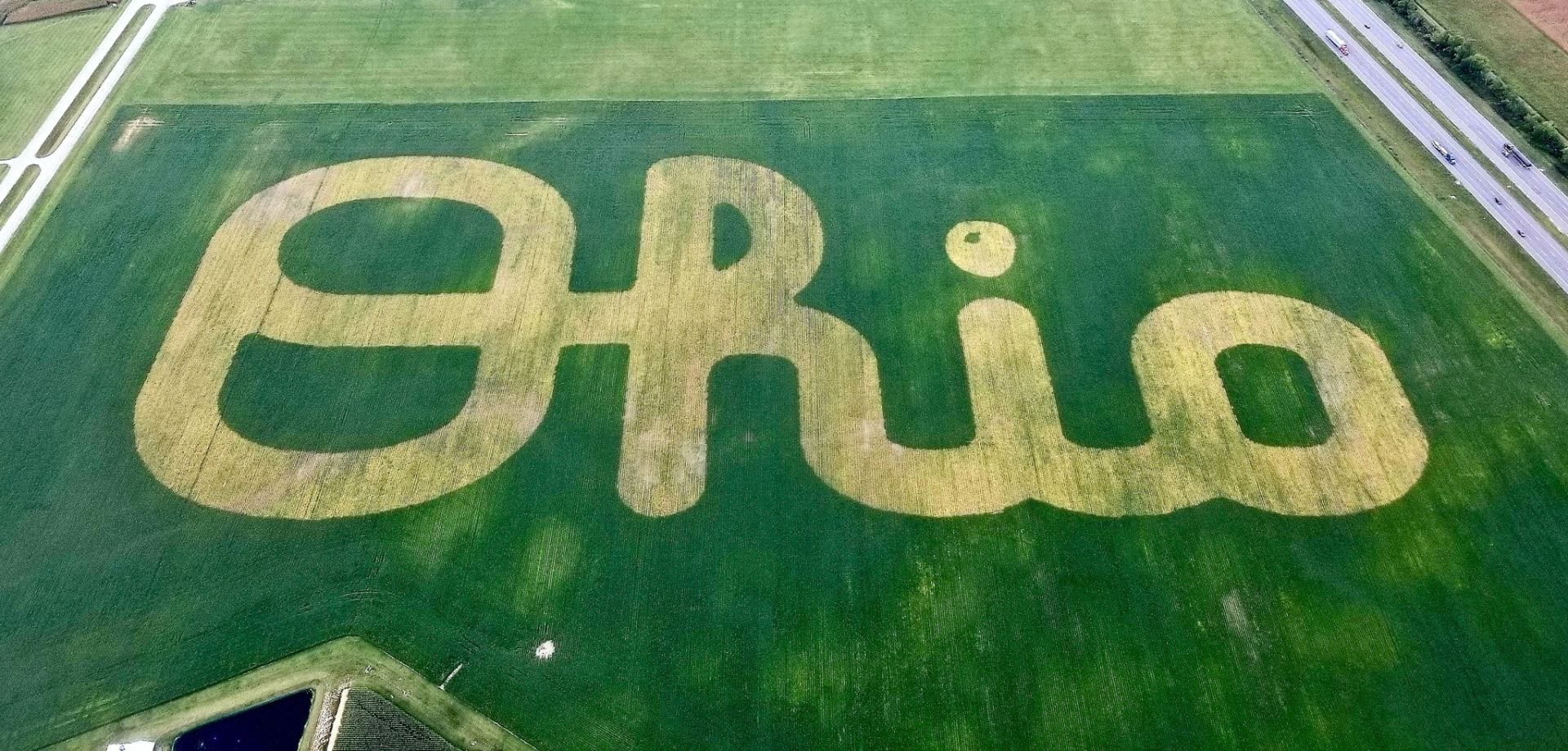
Ohio State’s Precision Ag program used soybeans that matured at different rates to create the world’s largest Script Ohio
Credit: Department of Food, Agricultural and Biological Engineering
No crop circle left by some extraterrestrial Ohio State fans in a UFO, this giant Script Ohio in a soybean field was a demonstration of precision agriculture planted by Ohio State’s Precision Agriculture program.
The design takes up about 17.5 acres of a 100-acre field and holds the title of the world’s largest Script Ohio according to Andrew Klopfenstein, senior research associate engineer in the Department of Food, Agricultural and Biological Engineering and manager of research for the project.
“People just look at the picture like ‘Oh, it’s just a Script Ohio,’ but it’s huge,” Klopfenstein said.
“To put it in perspective, if the entire Ohio State Marching Band were to perform their own version of Script Ohio, they would only be 20 feet wider than the diameter of the dot of the ‘I.’”
According to Klopfenstein, precision agriculture is the automation of equipment through the use of sensors on agricultural equipment that allow farmers to make better decisions before or during a field operation. He compared the automation of these tools to the advancement from a hand drill to a power drill.
“You’re still using you or myself to drill the hole but essentially it’s electric,” Klopfenstein said. “It’s the same thing for precision ag, so we’re taking what used to be a mechanical process and putting electronics on it.”
Ryan Tietje, research associate and graduate student in FABE who designed the project, said about 120,000 people came to attend the event from all over the U.S., as well as from other countries.
The project was planted in a university-owned field located near the Molly Caren Agricultural Center in London, Ohio, where the Farm Science Review takes place.
This is the fourth design of the project that acts as a giant advertisement to promote the annual Farm Science Review that took place last week, which Klopfenstein said was the largest university event outside of a football game. Tietje said the other three projects were a Block O, Brutus Buckeye and the Ohio State athletic logo using corn.
However, Tietje said this year the group wanted a new challenge.
“We’ve tested corn and we’ve seen that it’s worked repeatedly in corn, and so we wanted to have a little bit more of a challenge,” Tietje said. “We’ve been experimenting and testing multi-variety soybeans the last few years and have seen the different dry-down periods and that they really show different characteristics, so we thought it would be a good way to demonstrate this technology.”
When they worked with corn, the design would be created by different colored purple and yellow tassels, the part at the top of the corn which holds the pollen, Tietje said. This year, the design was made by using soybeans that matured at different rates to make a distinct difference between yellow soybeans and green soybeans.
The planter could hold both hybrids of soybeans at once, and the prescription written by Tietje told the equipment which one should be planted.
“Each row was able to distinguish whether it needed to be planting hybrid A or hybrid B at any given time based on the GPS points that I had assigned to it,” Tietje said.
According to Tietje, the crop used was not the only new factor to consider, but this design also featured more curves, which was more difficult for the planter than previous designs that used more straight lines.
Tietje said the planter was built by nine undergraduate students who work in the Precision Agriculture Department.
Beginning in January, the team worked for three months to get a design approved, Klopfenstein said. The field was then planted during the first week of May and will grow until it is harvested in the first week of October.
But Klopfenstein said they already have designs in mind for next year’s project, but are keeping them quiet for now.
“People start prying for ideas as soon as this one comes out. ‘Oh, what’s the next one going to be?’ We’re like ‘Just wait until next year,’” Klopfenstein said.


